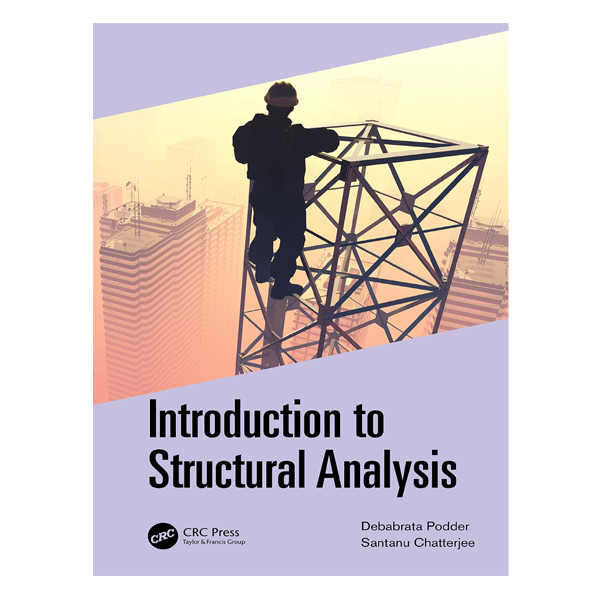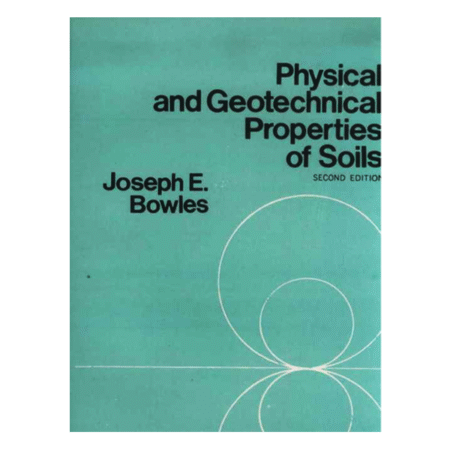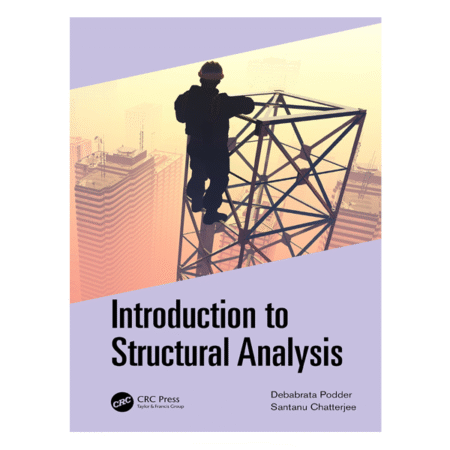Description
Book Description
Introduction to Structural Analysis covers the principles of structural analysis without any requirement of prior knowledge of structures or equations. Beginning with basic principles of equilibrium of forces and moments, all other subsequent theories of structural analysis have been discussed logically. Divided into two major parts, this book discusses the basics of mechanics and principles of degrees of freedom upon which the entire paradigm rests, followed by analysis of determinate and indeterminate structures. The energy method of structural analysis is also included. Worked out examples are provided in each chapter to explain the concepts and solve real-life structural analysis problems along with a solutions manual. Aimed at undergraduate and senior undergraduate students in civil, structural, and construction engineering, this book:
• Deals with the basic levels of structural analysis (i.e., types of structures and loads, materials and section properties up to the standard level, including analysis of determinate and indeterminate structures).
• Focuses on generalized coordinate systems and Lagrangian and Hamiltonian mechanics as an alternative method of studying the subject.
• Introduces structural indeterminacy and degrees of freedom with many worked out examples.
• Covers fundamentals of matrix theory of structural analysis.
• Reviews energy principles and their relationship for calculating structural deflections.
• Covers plastic analysis of structures.
Table of Contents
Contents
Preface…………………………………………………………………………………………………….. xiii
Authors……………………………………………………………………………………………………….xv
PART I Introduction to Structural Analysis,
Loads, Material, and Section Properties
Chapter 1 Introduction to Structural Analysis……………………………………………….3
1.1 Introduction……………………………………………………………………..3
1.2 Historical Background……………………………………………………….3
1.3 Importance of Structural Analysis………………………………………8
PART II Analysis of Statically Determinate Structures
Chapter 2 Types of Structures and Loads…………………………………………………… 13
2.1 Introduction…………………………………………………………………… 13
2.2 Structural Classifications…………………………………………………. 13
2.2.1 Tension Structures………………………………………………. 13
2.2.2 Compression Structures………………………………………. 14
2.2.3 Trusses………………………………………………………………. 15
2.2.4 Shear Structures…………………………………………………. 16
2.2.5 Bending Structures……………………………………………… 16
2.3 Structural Systems for Transmitting Loads and Load Path……. 17
2.4 Dead Loads……………………………………………………………………. 19
2.5 Live Loads……………………………………………………………………..20
2.6 Wind Loads……………………………………………………………………20
2.7 Snow Loads…………………………………………………………………… 21
2.8 Earthquake Loads……………………………………………………………22
2.9 Hydrostatic and Soil Pressure……………………………………………24
2.10 Thermal and Other Effects……………………………………………….25
2.11 Load Combinations…………………………………………………………25
2.12 Analytical Model…………………………………………………………….25
Chapter 3 Material and Section Properties………………………………………………….29
3.1 Introduction……………………………………………………………………29
3.2 Simple Stress-Strain Relationship……………………………………..29
3.3 Young’s Modulus or Modulus of Elasticity…………………………30
3.4 Secant Modulus……………………………………………………………… 31
3.5 Tangent Modulus……………………………………………………………. 31
3.6 Shear Modulus or Modulus of Rigidity……………………………… 32
3.7 Yield Strength………………………………………………………………… 32
3.8 Ultimate Strength…………………………………………………………… 33
3.9 Modulus of Rupture in Bending……………………………………….. 33
3.10 Modulus of Rupture in Torsion…………………………………………. 33
3.11 Poisson’s Ratio……………………………………………………………….. 33
3.12 Coefficient of Thermal Expansion……………………………………. 33
3.13 Elastic Assumptions………………………………………………………..34
3.14 Sturctural Nonlinearity……………………………………………………34
3.15 Cross-Sectional Area………………………………………………………. 35
3.16 Center of Gravity and Centroid………………………………………… 35
3.17 Elastic Neutral Axis………………………………………………………..36
3.18 Second Moment of Area and Radius of Gyration………………..36
3.19 Elastic Section Modulus…………………………………………………..38
Chapter 4 Basic Concepts of Generalized Coordinates, Lagrangian,
and Hamiltonian Mechanics……………………………………………………… 39
4.1 Introduction and Concept of Generalized Coordinates………… 39
4.2 Concept of Configuration Space and Phase Space……………….40
4.3 Introduction to Lagrangian and Hamiltonian Formulation
of Mechanics…………………………………………………………………. 41
4.3.1 Hamilton’s Equation of Motion…………………………….. 45
4.4 Concept of Symmetry and Conservation Laws……………………46
Chapter 5 Equilibrium and Support Reactions……………………………………………. 47
5.1 Introduction…………………………………………………………………… 47
5.2 Equilibrium of Structures………………………………………………… 47
5.2.1 Global and Local Equilibrium of Structures……………48
5.3 Free Body Diagrams………………………………………………………..50
5.4 Sign Convention…………………………………………………………….. 51
5.5 External and Internal Forces……………………………………………. 53
5.6 Types of Supports for Structures………………………………………. 58
5.7 Release of Internal Reactions or Member Forces………………… 58
5.7.1 Releasing Bending Moment…………………………………. 58
5.7.2 Releasing Shear Force…………………………………………. 61
5.7.3 Releasing Axial Force…………………………………………. 61
5.7.4 Releasing Axial Force and Bending Moment…………. 61
5.7.5 Releasing Shear Force and Bending Moment…………. 61
Chapter 6 Indeterminacy and Stability of Structure……………………………………..63
6.1 Introduction……………………………………………………………………63
6.2 Structural Indeterminacy…………………………………………………63
6.3 Static Indeterminacy and Stability…………………………………….63
6.3.1 Static Indeterminacy of Rigid Structures………………..64
6.3.1.1 Shortcut Method for Determining
Internal Static Indeterminacy of Rigid
Structures……………………………………………..68
6.3.1.2 Degree of Statical Indeterminacy
When Load is Applied to the
Structure……………………………………………… 70
6.3.2 Static Indeterminacy of Pin-Jointed
Structures………………………………………………………….. 72
6.3.2.1 Shortcut Method for Determining
Internal Static Indeterminacy of Pin-
Jointed Structures…………………………………. 73
6.3.3 External and Internal Stability of
Structures………………………………………………………….. 74
6.3.3.1 External Stability of Structures………………. 74
6.3.3.2 Internal Stability of Structures……………….. 75
6.4 Kinematic Indeterminacy of Structures……………………………..77
6.4.1 Kinematic Indeterminacy of Pin-Jointed
Structures or Truss……………………………………………… 78
6.4.2 Kinematic Indeterminacy of Rigid-Jointed
Structures………………………………………………………….. 79
6.4.3 Summary of All Formulations for Static and
Kinematic Indeterminacy……………………………………..83
6.5 Principle of Superposition………………………………………………..83
Chapter 7 Plane Trusses and Space Trusses………………………………………………..85
7.1 Introduction……………………………………………………………………85
7.2 Common Types of Trusses……………………………………………….85
7.3 Classification of Coplanar Trusses…………………………………….85
7.4 Assumptions on Analysis of Trusses………………………………….87
7.5 Arrangement of Members of Coplanar Trusses – Internal
Stability…………………………………………………………………………89
7.6 Static Determinacy, Indeterminacy, and Instability of
Coplanar Trusses and Their Solution Methods……………………90
7.6.1 Method of Joints………………………………………………….92
7.6.2 Method of Sections………………………………………………95
7.6.3 Method of Tension Coefficients…………………………….97
7.6.4 Graphical Method of Truss Analysis…………………… 101
7.6.4.1 Bow’s Notation…………………………………… 101
7.6.5 Henneberg’s Method of Solution for Complex
Trusses…………………………………………………………….. 107
7.7 Compound Trusses……………………………………………………….. 111
7.8 Space Trusses………………………………………………………………. 112
7.9 Zero-Force Members of Trusses…………………………………….. 118
Chapter 8 Beams and Frames, Shear, and Bending Moments……………………… 121
8.1 Introduction…………………………………………………………………. 121
8.2 Axial Force, Shear, and Bending Moments……………………… 121
8.3 Shear and Bending Moment Diagrams for a Beam……………. 122
8.4 Qualitative Discussion on the Deflected Shape of
Beams…………………………………………………………………………. 128
8.5 Relationships between Loads, Shear, and Bending
Moments……………………………………………………………………… 130
8.6 Shear and Bending Moment Diagram of Frames………………. 136
Chapter 9 Deflections of Beams by Geometric Methods……………………………. 143
9.1 Introduction…………………………………………………………………. 143
9.2 Deflected Shapes and Elastic Curve………………………………… 143
9.3 Double Integration Method……………………………………………. 146
9.4 Moment-Area Method…………………………………………………… 147
9.5 Conjugate Beam Method……………………………………………….. 150
9.6 Macaulay’s Method………………………………………………………. 154
Chapter 10 Energy Principles and Deflection of Beam………………………………… 157
10.1 Introduction…………………………………………………………………. 157
10.2 Strain Energy and Pure Bending…………………………………….. 157
10.3 Principle of Virtual Work………………………………………………. 162
10.3.1 Principle of Virtual Displacements for Rigid
Bodies……………………………………………………………… 163
10.3.2 Principle of Virtual Forces for Deformable
Bodies……………………………………………………………… 166
10.4 Deflection of Trusses by Virtual Work Method………………… 167
10.5 Deflection of Beams by Virtual Work Method…………………. 170
10.6 Deflection of Frames by Virtual Work Method………………… 171
10.7 Castigliano’s Theorem…………………………………………………… 173
10.8 Maxwell-Betti Law of Reciprocal Deflections………………….. 177
Chapter 11 Rolling Loads and Influence Lines and Their Applications…………. 181
11.1 Introduction…………………………………………………………………. 181
11.2 Influence Lines for Beams and Frames by Equilibrium
Method………………………………………………………………………… 181
11.3 Qualitative Influence Lines and Müller-Breslau’s
Principle………………………………………………………………………. 188
11.3.1 Müller-Breslau Principle……………………………………. 188
11.4 Influence Lines for Floor Girders……………………………………. 190
11.5 Influence Lines for Trusses……………………………………………. 194
11.6 Maximum Influence at a Point Due to a Series of
Concentrated Loads………………………………………………………. 197
11.7 Maximum Influence at a Point Due to a Uniformly
Distributed Live Load……………………………………………………204
11.8 Absolute Maximum Shear and Moment…………………………..205
11.8.1 Absolute Maximum Bending Moment for
Series of Concentrated Loads……………………………..208
11.9 Influence Lines for Deflections………………………………………. 214
Chapter 12 Cables, Arches, and Suspension Bridges…………………………………… 217
12.1 Introduction…………………………………………………………………. 217
12.2 Cables…………………………………………………………………………. 217
12.3 Cables Subjected to Concentrated Loads…………………………. 217
12.4 Cable Subjected to a Uniformly Distributed Load…………….. 221
12.5 Arches………………………………………………………………………….226
12.6 Three-Hinged Arches…………………………………………………….227
12.7 Three-Hinged Stiffening Girders……………………………………. 235
Chapter 13 Analysis of Symmetric Structures……………………………………………. 243
13.1 Introduction…………………………………………………………………. 243
13.2 Symmetric and Antisymmetric Components of
Loadings……………………………………………………………………… 243
13.3 Symmetric and Antisymmetric Components of
Loadings………………………………………………………………………244
13.4 Behavior of Symmetric Structures under Symmetric
and Antisymmetric Loadings………………………………………….246
PART III Analysis of Statically
Indeterminate Structures
Chapter 14 Introduction to Statically Indeterminate Structures…………………….. 251
14.1 Introduction…………………………………………………………………. 251
14.2 Advantages of Indeterminate Structure…………………………… 252
14.3 Disadvantages of Indeterminate Structure……………………….. 253
Chapter 15 Approximate Analysis of Statically Indeterminate
Structures……………………………………………………………………………… 255
15.1 Introduction…………………………………………………………………. 255
15.2 Assumptions for Approximate Analysis………………………….. 255
15.2.1 Assumptions about the Location of Points of
Inflection………………………………………………………….256
15.2.2 Assumptions about the Distribution of Forces
and Reactions…………………………………………………… 258
15.3 Vertical Loads on Building Frames………………………………… 258
15.4 Lateral Loads on Building Frames: Portal Method……………. 259
15.5 Lateral Loads on Building Frames: Cantilever Method………265
Chapter 16 Method of Consistent Deformations…………………………………………. 271
16.1 Introduction Force Method of Analysis: General
Procedure…………………………………………………………………….. 271
16.2 Structures with a Single Degree of Indeterminacy……………. 271
16.3 Method of Least Work…………………………………………………… 273
16.4 Structures with Multiple Degree of Indeterminacy…………… 276
16.4.1 Shear and Bending Moment Diagrams of
Three-Span Continuous Beams………………………….. 279
16.5 Support Settlements, Temperature Changes, and
Fabrication Errors…………………………………………………………. 279
16.5.1 Temperature Changes and Fabrication Errors………..282
Chapter 17 Influence Lines for Statically Indeterminate Structures……………….285
17.1 Introduction of Influence Lines for Statically
Indeterminate Structures………………………………………………..285
17.2 Influence Lines for Beams………………………………………………285
17.3 Influence Lines for Trusses…………………………………………….292
17.4 Qualitative Influence Lines by the Müller-Breslau’s
Principle and Influence Line for Frames…………………………..294
17.5 Alternate Approach for Finding Influence Line Diagrams
for Indeterminate Beams………………………………………………..298
Chapter 18 Slope Deflection Method………………………………………………………….305
18.1 Introduction………………………………………………………………….305
18.2 Slope Deflection Equations and Analysis of Continuous
Beams………………………………………………………………………….305
18.3 Members with Far End Hinged………………………………………. 315
18.4 Analysis of Frames without Any Sidesway………………………. 318
18.5 Analysis of Frames with Sidesway………………………………….. 323
Chapter 19 Moment Distribution Method…………………………………………………… 327
19.1 Introduction…………………………………………………………………. 327
19.2 General Principles and Definitions………………………………….. 327
19.2.1 Sign Convention……………………………………………….. 327
19.2.2 Fixed-End Moments (FEMs)………………………………. 327
19.2.3 Member Stiffness Factors………………………………….. 328
19.2.4 Joint Stiffness Factor…………………………………………. 329
19.2.5 Distribution Factor (DF)…………………………………….. 331
19.2.6 Member Relative Stiffness Factor……………………….. 332
19.2.7 Carry over Factor……………………………………………… 333
19.3 Basic Concept of Moment Distribution Method……………….. 333
19.4 Stiffness Factor Modifications………………………………………… 335
19.4.1 Member Pin Supported at Far End………………………. 335
19.4.2 Symmetric Beam and Loading…………………………… 336
19.4.3 Symmetric Beam with Unsymmetric Loading……… 337
19.5 Analysis of Continuous Beams………………………………………. 339
19.6 Analysis of Frames without Sidesway……………………………… 341
19.7 Analysis of Frames with Sidesway…………………………………..344
19.7.1 Multistorey Frames…………………………………………… 350
Chapter 20 Kani’s Method or Rotation Contribution Method……………………….. 353
20.1 Introduction…………………………………………………………………. 353
20.2 Basic Concept………………………………………………………………. 353
20.2.1 Members without Relative Lateral
Displacement……………………………………………………. 353
20.2.2 Members with Relative Lateral Displacement………. 362
20.3 Analysis of Frames with Sidesway with Vertical
Loadings………………………………………………………………………366
20.4 Analysis of Frames with Sidesway with Vertical
Loading and Horizontal Loading at Nodal Points…………….. 378
20.5 Analysis of Frames with Columns with Unequal Height……. 387
Chapter 21 Column Analogy Method…………………………………………………………399
21.1 Introduction………………………………………………………………….399
21.2 Basic Concept……………………………………………………………….399
21.3 Development of the Column Analogy Method………………….402
21.4 Stiffness and Carry over Factors Determined by
Method of Column Analogy……………………………………………406
21.5 Fixed End Moments due to Support Settlement…………………407
21.6 Analysis of Portal Frames………………………………………………409
Chapter 22 Beams and Frames Having Nonprismatic Members……………………. 413
22.1 Introduction…………………………………………………………………. 413
22.2 Deflections and Loading Properties of Nonprismatic
Members……………………………………………………………………… 413
22.3 Moment Distribution for Structures Having Nonprismatic
Members……………………………………………………………………… 414
22.3.1 Beam Pin Supported at Far End………………………….. 415
22.3.2 Symmetric Beam and Loading…………………………… 416
22.3.3 Symmetric Beam with Antisymmetric Loading……. 416
22.3.4 Support Settlement……………………………………………. 416
22.4 Slope Deflection Equation for Structures Having
Nonprismatic Members…………………………………………………. 417
22.4.1 Loads………………………………………………………………. 417
22.4.2 Relative Joint Translation…………………………………… 417
22.4.3 Rotation at A…………………………………………………….. 418
22.4.4 Rotation at B…………………………………………………….. 418
Chapter 23 Introduction to Matrix Structural Analysis………………………………… 419
23.1 Introduction…………………………………………………………………. 419
23.2 Analytical Model………………………………………………………….. 419
23.3 Member Stiffness Relations in Local Coordinates
for 2D Truss…………………………………………………………………. 420
23.4 Coordinate Transformation for 2D Truss…………………………. 422
23.5 Displacement Transformation Matrix for 2D Truss…………… 423
23.6 Force Transformation Matrix………………………………………….424
23.7 Member Global Stiffness Matrix for 2D Truss…………………. 425
23.8 Application of Stiffness Method for Truss Analysis………….. 428
23.9 Application of Stiffness Method for Space Truss Analysis… 430
23.10 Application of Stiffness Method for Beam Analysis…………. 430
23.11 Beam Structure Complete Global Stiffness Matrix…………… 432
23.12 Application of Stiffness Method for Frame Analysis…………. 434
Chapter 24 Introduction to Plastic Analysis of Structure……………………………… 437
24.1 Introduction…………………………………………………………………. 437
24.2 Stress-Strain Curve of a Ductile Material………………………… 437
24.3 Plastic Moment…………………………………………………………….. 438
24.4 Methods of Analysis………………………………………………………440
24.4.1 The Maximum Principle, Static Theorem, Lower
Bound Theorem, or Safe Theorem……………………….444
24.4.2 The Minimum Principle, Kinematc Theorem,
Upper Bound Theorem, or Unsafe Theorem………….444
24.4.3 The Uniqueness Theorem…………………………………..445
24.5 Static Method for Determining Collapse Load………………….445
24.6 Kinematic Method for Determining Collapse Load…………..449
24.7 Plastic Analysis of Portal Frames……………………………………. 452
Appendix A……………………………………………………………………………………………… 457
Appendix B……………………………………………………………………………………………… 459
Appendix C………………………………………………………………………………………………465
Appendix D……………………………………………………………………………………………… 467
Bibliography…………………………………………………………………………………………….489
Index……………………………………………………………………………………………………….. 491









Reviews
There are no reviews yet.